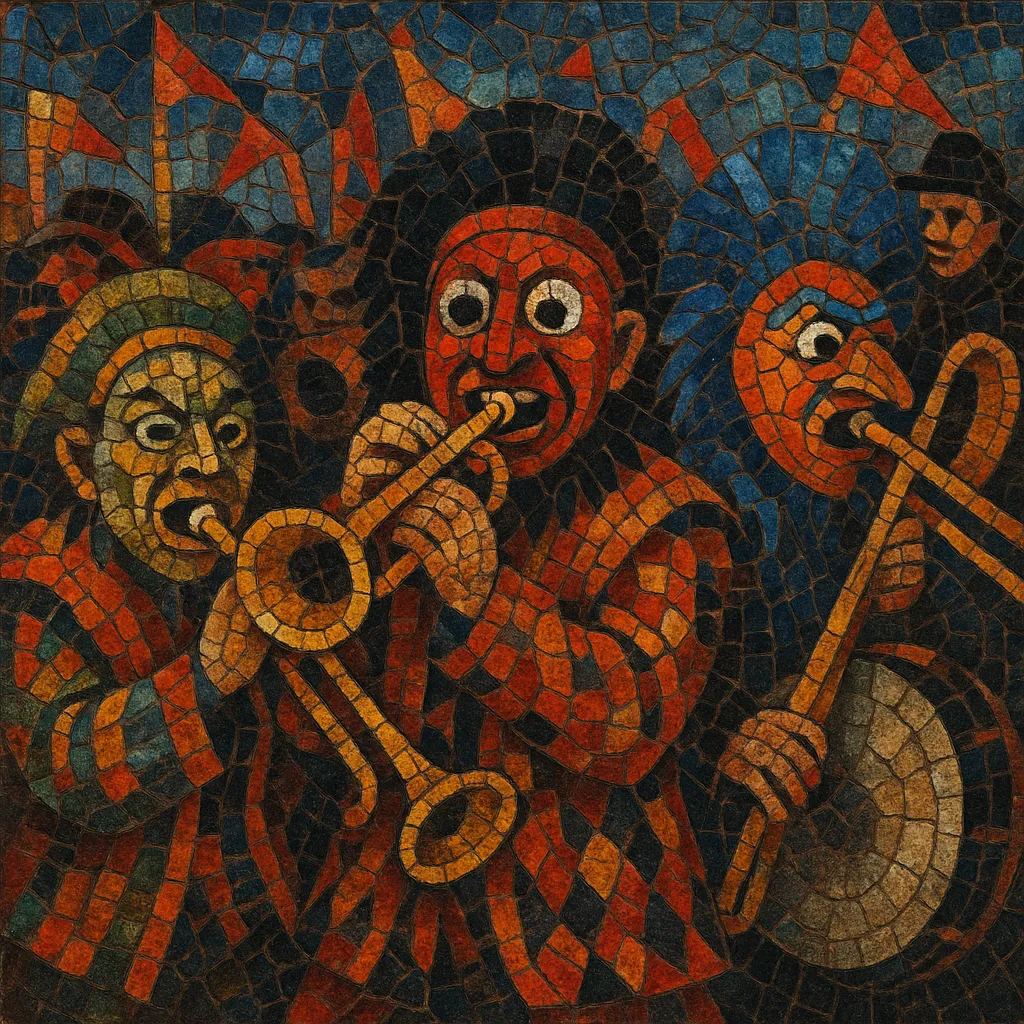
Guggenmusik is a raucous, carnival-oriented brass-and-percussion band tradition associated with the Swiss Fasnacht (carnival), particularly in central Switzerland (Lucerne) and Basel, and across the Alemannic carnival belt of southern Germany and Alsace.
Ensembles parade in elaborate masks and costumes, playing simplified, very loud brass arrangements of popular tunes, Schlager hits, rock and TV themes. A hallmark is the intentionally rough, sometimes purposefully out‑of‑tune sound (“schränzen”), heavy percussion, and exuberant crowd interaction. The effect is festive, humorous, and street-theatrical rather than polished or symphonic.
Guggenmusik is a community practice rooted in local clubs; it values spectacle, participation, and collective energy over precision, and functions as the sonic engine of carnival processions and plaza concerts.
Guggenmusik grew out of central European carnival customs and local street bands in Switzerland during the early 20th century. Precedents include noisy, intentionally rough “cat music” (Chatzemusig) processions and ad hoc brass groups that accompanied guilds and masked revelers.
By the 1920s and 1930s, Lucerne and other Swiss towns began to host organized carnival bands that emphasized volume, humor, and the playful distortion of familiar melodies. After World War II, the practice consolidated into named community ensembles with dedicated rehearsal spaces, costumes, and annual repertoires.
As carnival festivities expanded, Guggenmusik spread across the Alemannic region (southern Germany, Alsace) and throughout Switzerland. Bands adopted a fairly standardized instrumentation (trumpets, trombones, baritones, tubas/sousaphones, drumlines with marching bass drums, snares, toms, and cymbals). Repertoires increasingly featured Schlager and international pop/rock hits, arranged for maximum crowd recognition and punch.
Today hundreds of ensembles rehearse for months ahead of Fasnacht, unveiling themed costumes and new arrangements annually. Performances center on parades and outdoor stages, prioritizing party atmosphere, audience call-and-response, and spectacle. While some groups pursue tighter intonation, the genre still celebrates the exuberant, slightly chaotic “schränz” aesthetic that defines its carnival spirit.

